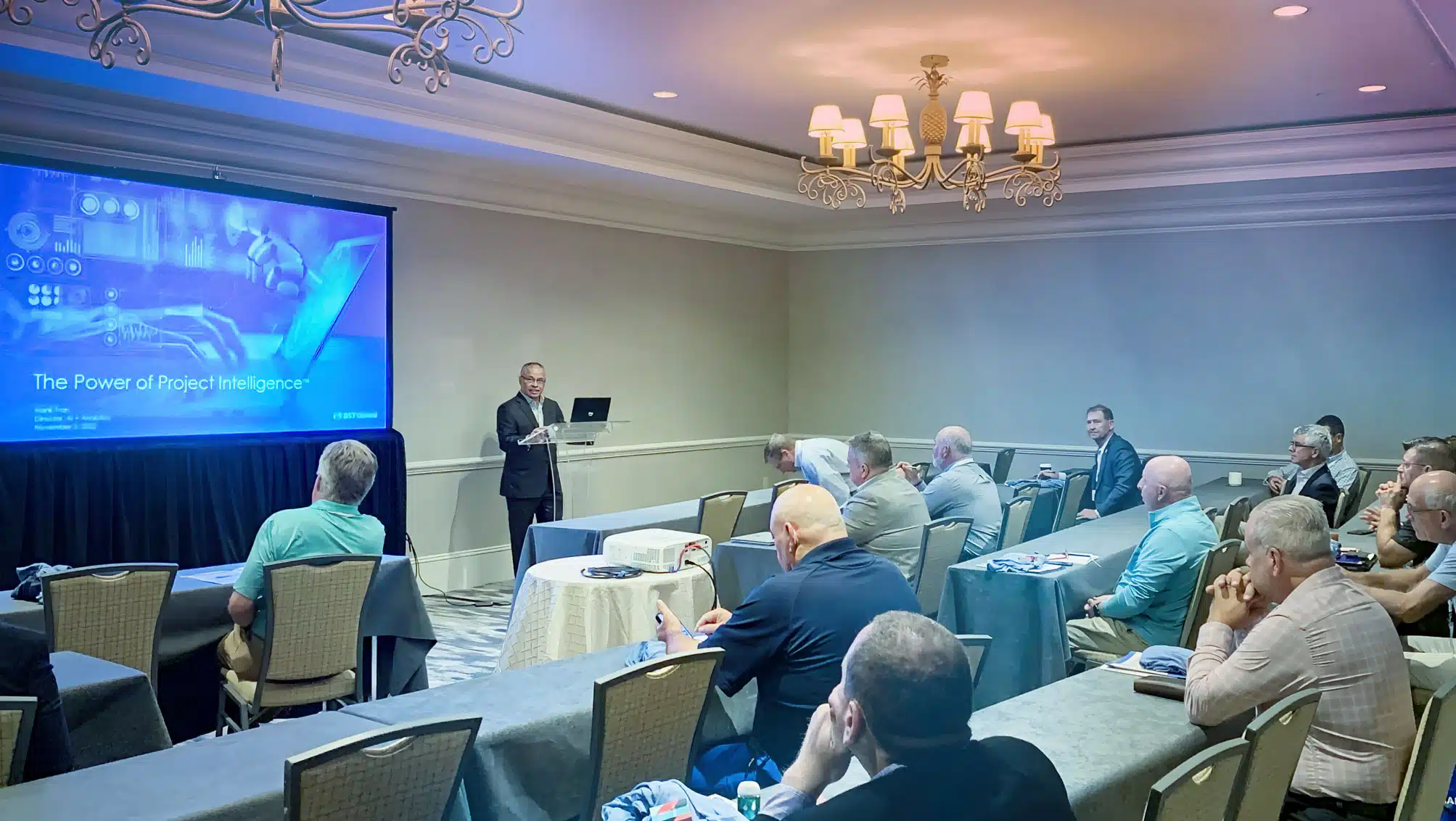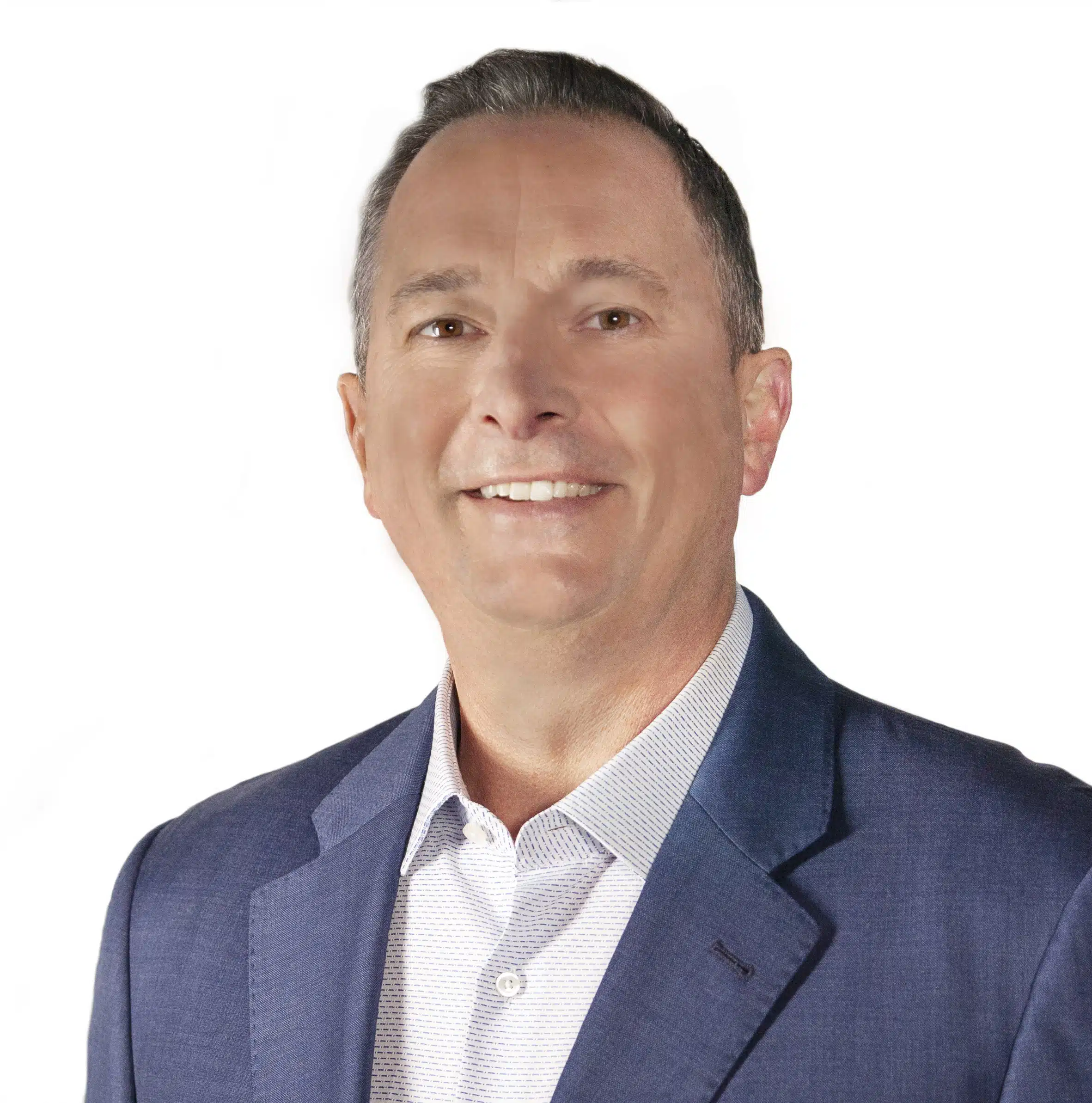
Rusk O’Brien Gido + Partners’ Growth & Ownership Strategies Conference gathered together leaders of successful engineering, environmental consulting, and architecture firms throughout the country to showcase the best practices and most effective strategies for achieving growth, improving profitability, and building real and sustainable value. The event took place in Naples, FL, November 2–4, 2022.
On November 3, BST Global Director of AI & Analytics Hank Tran presented “The Power of Project Intelligence™” at the conference. Hank’s session broke down how AI, machine learning and big data can be applied within AEC firms to transform their businesses. Hank stressed that AEC firms have a unique opportunity to leverage these technologies and foster the data-driven consultancy of the future, built on project intelligence™ and powered by predictive analytics. Hank concluded by discussing how to kick off this innovation journey internally.
BST Global Chief Executive Officer Javier A. Baldor joined Hank on stage during the Q&A portion of the session. Here’s a recap of what was discussed:
| Question: Bad data in is bad data out. What happens when bad data is entered into the model? | |
 |
Hank’s response: “The model will actually tell you that there’s bad data or a lot of noise in the data and that it is unable to predict based on that.” |
| Question: Have you seen any human-behavior changes as data predicts a downward trend? | |
 |
Hank’s response: “People react right away, the moment they see that their project is going downhill. You’ll have a very responsive audience — they will go and investigate the data to see if what is feeding the model is correct.” |
| Question: How far do the models drill down into the project data to determine the contributing causes of the downward trend? | |
 |
Hank’s response: “Right now, it drills down to the employee level and the task level. We collect transaction details every 15 minutes, so we have the ability to predict out every 15 minutes, if not sooner. But for capacity planning or resource management, we could use a different model that could predict in real time.” |
| Question: I’m a Deltek user. How long would it take to get this model up and running on my system? | |
 |
Hank’s response: “For people using BST10, we could get the data ingested and models up in a day, because everything is internal. For non-BST10 users, like those on Deltek or Oracle, we will begin offering a solution next year where we would interface with those ERP systems. If I’m assuming your data is clean and everything goes smoothly during the data-ingestion process, there’s no reason it couldn’t be up and running in less than a week.” |
 |
Javier’s response: “The intent is to minimize the change, conversion and everything that goes along with it, and begin to offer consumer-grade apps that integrate with different systems.” |
| Question: So I could use these models even if I’m not on BST10? | |
 |
Javier’s response: “Yes, there are many different platforms out there, but we want you to be able to just land and go. You should be able to take the data not only from BST10 but from other ERP systems and begin to drive this type of prediction for project teams.” |
 |
Hank’s response: “Yes, no matter what platform you are on — Deltek, Microsoft Dynamics, Oracle, SAP or others — there will be a data lake in a standard format that this model or any other model we develop will work with and that you’d have access to.” |
| Question: Does this product replace what Deltek Vision or Vantagepoint offers? | |
 |
Javier’s response: “The intent is to complement it. If you take a look at many of the ERP systems out there, they are good accounting systems, and the money is made on the project. So, how do you take the accounting data and enrich it, make it smart and predictive? That is the difference. It’s about preserving that ERP and accounting data, but bringing in predictive capabilities for the project managers.” |
On November 4, BST Global Chief Executive Officer Javier A. Baldor participated in the “Executive Strategic Growth Discussion” panel. He joined Michael Renshaw from Trilon Group, Jason Shepard from Dwell Design Studio, and Brian Sielaff from Tamarack Grove Engineering on the panel. Steve Gido from ROG+ Partners served as the session’s moderator. Here are some highlights:
| Question: How does new technology help clients with their challenges in the future? | |
 |
Javier’s response: “I think the future is now. There’s no question that innovative technology is opening up some fantastic opportunities in the delivery of projects. Think digital twins, AI, machine learning, drones, augmented reality, the list goes on and on. That being said, I think on the business side of managing projects, it really hasn’t materially changed in the last couple of decades.
We’ve done a lot of research with firms all over the world, particularly project teams, and what I believe is that we need to move away from the notion of principally accounting for projects to creating a smart data-driven consultancy. What we hear from project managers is that they are using Excel, creating a constellation of spreadsheets to manage their projects, and it is tremendously inefficient. We’ve asked them why they are not using their ERP systems and they’ve said it’s just too hard, too complicated, too convoluted, and the data is reactionary. They really rely on Accounting to provide them with information. So there’s a huge prize in leveraging AI, big data, machine learning, intelligence automation and anomaly detection to create that smart data-driven consultancy.” |
| Question: Some firms may have always been run in a traditional way but we are seeing a push to start to innovate and use new technology. Do we see any pushback with that in terms of firm culture? | |
 |
Javier’s response: “There’s a tremendous opportunity in really fostering a culture of innovation. I think this ties directly into retention. What kind of company do you want to be? Do you want to be a company that’s modern, that innovates, that has opportunity? And, I believe that ties directly to retention. I think you have to lead by being an innovator and thinking differently about how you approach solutions.
I’m a big Steve Jobs fan, and those who tracked Apple back in the day, you might remember in 1997, that was his campaign: ‘Think Differently.’ You need to look at things in a creative way and approach things from a different perspective. I have seen other firms look to the right and left to see what someone else’s strategy is and react to that, almost like a swimmer swimming in someone else’s lane. Think differently and come up with your own strategy and stick to that. Secondly, think about what problem you are trying to solve and establish your focus.” |
| Question: What is your approach and strategy to hiring? | |
 |
Javier’s response: “We use a team approach. We have a group of people who would be working with the candidate involved, and any one of them can vote the candidate down. A lot of these top candidates that we have interviewed are shocked that they were not brought in, but the group might pick up on a bad vibe or how they treated the receptionist when they walked in. And the larger team will say no, they don’t want to work with that person. Ultimately, we leave it to the hiring manager, but overall, it has worked really well in ensuring we get the right talent to contribute to our overall company culture.” |
BST Global appreciates the opportunity to participate in events like these, and looks forward to future engagements. Check out our Events page to find out where else we’ll be — we’d love to see you at some of our sessions!








